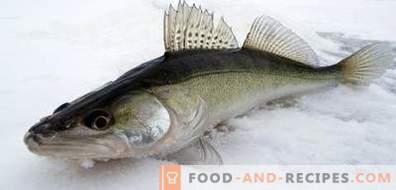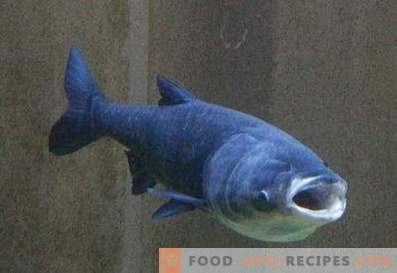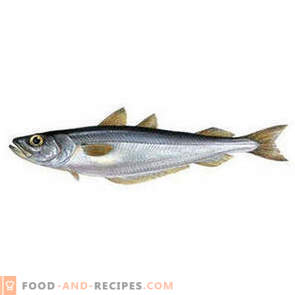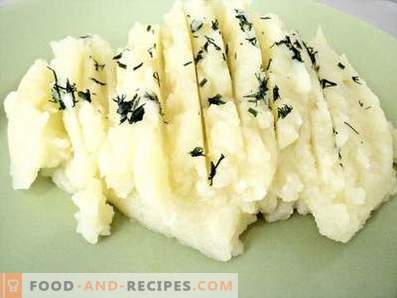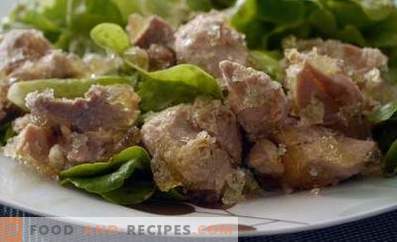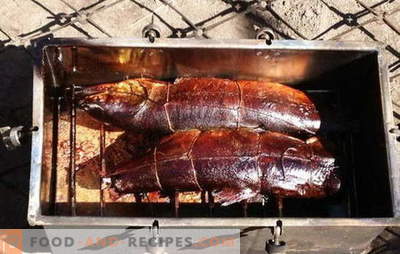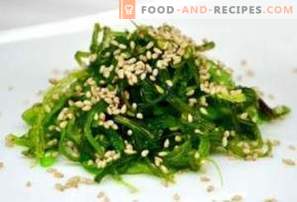
Trout is a generic name for several species of freshwater fish belonging to the salmon family. Representatives of this group inhabit the cold lakes and rivers in the mountainous and foothill regions of Europe, Asia Minor, Africa, and North and South America. In addition, they are found in the Baltic, Aral, White and Black seas.
The trout has an elongated body slightly compressed from the sides, covered with fine dense scales. The sides, back and tail fin of the fish are covered with a variety of black, brown, brown or red spots. The head of a trout is small, truncated. In the mouth of the fish are several rows of sharp and strong teeth. The color of the dorsal, fat, anal, ventral and pectoral fins can vary from greenish-yellow to black.
The color of the trout depends on the conditions of its habitat. Fish grown in a pond with a light sandy or rocky bottom has a silvery belly, light olive sides and back. Some individuals have a pink-purple strip on the lateral line. The trout that lives in ponds with peat or oozy bottom has a brownish color. The color of her back can vary from light brown to black.
Trout never reach significant sizes. The length of most individuals does not exceed 50 cm, and the weight is 1 kg. Males in this group are much larger than females.
All types of trout are valuable objects of fishing. The meat of this fish is eaten salted, smoked, boiled, fried, baked and stewed. In addition, it is used for cooking soup, meatballs, snacks and fillings for baking.
Nutritional Value
100 g of fresh trout contains:
- 20, 687 g of proteins;
- 6, 512 g of fat;
- 71, 389 g of water;
- 1, 091 g of ash;
- 0, 359 g of omega-6 fatty acids;
- 57, 883 mg of cholesterol;
- 0, 179 g of omega-3 fatty acids.
The product contains 8 essential and 10 essential amino acids (arginine, leucine, lysine, threonine, isoleucine, phenylalanine, glycine, aspartic acid, etc.).
Vitamins in fish
Trout is rich in vitamins. The hundred servings of this fish contains:
- retinol equivalent, A - 16, 224 μg;
- thiamine, B1 - 0, 345 mg;
- riboflavin, B2 - 0, 327 mg;
- choline, B4 - 66, 012 mg;
- pantothenic acid, B5 - 1, 936 mg;
- pyridoxine, B6 - 0, 197 mg;
- folic acid, B9 - 12, 112 μg;
- cobalamin, B12 - 7,684 μg;
- ascorbic acid, C - 0, 499 mg;
- tocopherol equivalent, E - 0, 191 mg;
- phylloquinone, K - 0, 092 mkg;
- Niacin equivalent, PP - 4, 447 mg.
In addition, the product contains vitamin D (calciferol). The concentration of this compound is 3.967 μg per 100 g.
Useful items
Macroelements in 100 g of trout:
- potassium - 362, 044 mg;
- sodium - 52, 498 mg;
- magnesium - 21, 866 mg;
- phosphorus - 244, 804 mg;
- calcium - 42, 905 mg.
Trace elements in 100 g of fish:
- iron - 1, 433 mg;
- manganese - 0, 848 mg;
- copper - 187, 043 mkg;
- selenium - 13, 017 mkg;
- zinc - 0, 652 mg.
Calories of trout
100 g of raw trout contains 149, 517 kcal. In the same amount of boiled fish - 138, 618 kcal, baked - 156, 804 kcal, salted - 150, 001 kcal, fried - 238, 524 kcal, stewed - 168, 903 kcal, smoked - 172, 994 kcal. The energy value of 100 g of trout soup - 27, 844 kcal. One hundred servings of cutlets from this fish contains 225, 412 kcal.
Useful properties of trout
- Regular consumption of trout dishes helps to activate the brain, increase efficiency, physical endurance, concentration and the ability to memorize large amounts of information.
- The substances contained in the trout fillet strengthen the walls of the vessels and the myocardium, improve blood circulation, maintain blood pressure within the normal range. In addition, they contribute to the removal of excess “bad” cholesterol from the body, thereby reducing the risk of atherosclerosis. People who include this product in their diet at least 3 times a week significantly reduce the likelihood of developing cardiac pathologies.
- Trout contains nutrients that regulate blood sugar concentration. Therefore, dishes based on it are useful to persons suffering from diabetes.
- All types of trout are rich in vitamins of group B - compounds that activate the metabolic processes in the body and normalize the work of the hematopoietic system.
- Substances entering the body by consuming this fish strengthen the nervous system, help minimize the adverse effects of stress on the body, improve sleep, reduce the risk of developing neuroses and depressions.
- Selenium, vitamin E, ascorbic acid, and other antioxidants present in trout neutralize the oxidative effects of free radicals. This can significantly slow down the aging of body tissues and reduce the likelihood of developing cancer.
- Regular consumption of trout in food helps to strengthen the immune system.
- The nutrients contained in the dishes from this fish improve the digestibility of iron and other beneficial elements in the digestive tract.
- Trout is rich in compounds that promote the excretion of carcinogens, toxins and other poisons.
- Phosphorus and other substances present in the fillets of this fish strengthen bones and muscles, thereby preventing the development of diseases of the musculoskeletal system. People who include this product in the menu at least twice a week, less likely to detect dental pathology.
- With long-term consumption of trout in food, the condition improves, the growth of nails and hair accelerates.
- Dishes from this fish are useful for people recovering from surgical interventions, heavy physical exertion, prolonged illnesses.
- Trout fillet has a low energy value. Therefore, people suffering from obesity and seeking to lose weight, can include this product in the diet, without worrying about the consequences. From the menu should be excluded only fried dishes from this fish.
- Useful substances contained in trout normalize the reproductive system in men and women (improve sperm quality, increase the likelihood of conception, reduce the unpleasant symptoms of premenstrual syndrome, etc.).
Contraindications and harm to trout
- Trout is contraindicated for people who suffer from allergies to fish and seafood.
- Doctors recommend that women eliminate this product from the diet during pregnancy and lactation.
- Trout is often infected with parasites. Therefore, before eating it should be subjected to thorough heat treatment. Salt and smoke can only healthy fish.
- Trout meat is contraindicated for liver and gastrointestinal diseases.
- With ischemia of the heart, hypertension and atherosclerosis, it is necessary to sharply limit the consumption of salted and fried fish.







